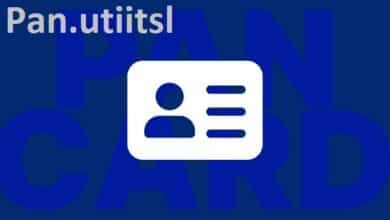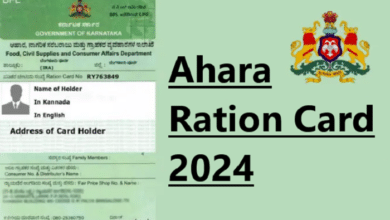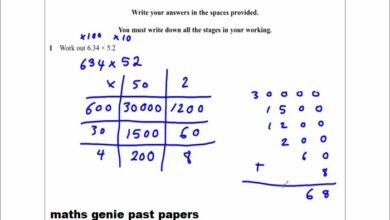Self Introduction for Interview: A Complete Guide to Making a Strong First Impression

A strong self-introduction for an interview is the key to setting a positive tone from the beginning. The way you introduce yourself can impact the interviewer’s perception of you, making it essential to present yourself confidently and professionally. Whether you are attending a job interview, a college admission interview, or a professional meeting, crafting the perfect self-introduction for an interview is a skill you need to master. In this guide, we will cover all aspects of introducing yourself effectively.
What is a Self Introduction for Interview?
A self-introduction for an interview is the first thing you say when meeting your interviewer. It is a brief but powerful summary of who you are, your professional background, skills, and what makes you a suitable candidate for the job. A well-structured self introduction for an interview includes your name, educational background, work experience, key skills, and a short statement about your career aspirations.
When giving your self-introduction for an interview, it is important to be confident, maintain good eye contact, and keep your response concise. The goal is to make a strong first impression that highlights your key qualifications and personality.
Why is Self Introduction for Interview Important?
Your self-introduction for an interview sets the stage for the rest of the conversation. It helps the interviewer understand your background, qualifications, and personality in a structured way. A well-prepared self-introduction for an interview can boost your confidence and make you stand out among other candidates.
A clear and confident self-introduction for an interview also helps you build rapport with the interviewer, making it easier for them to ask relevant questions. It allows you to guide the conversation towards your strengths and achievements, ensuring that the interviewer gets a positive impression of your capabilities.
How to Structure Your Self Introduction for Interview?
A well-organized self-introduction for an interview should follow a structured format to ensure clarity and effectiveness. Here’s how you can structure your response:
Start with a Greeting
Begin your self-introduction for an interview with a polite greeting and a smile. For example:
“Good morning, I’m pleased to meet you. My name is John Doe.”Mention Your Full Name
Clearly state your full name to ensure that the interviewer remembers it. Your name is the first key element of your self-introduction for an interview.Share Your Educational Background
Mention your highest qualification and the institution you graduated from. If you are a fresher, highlight your academic achievements.
Example: “I recently graduated with a degree in Computer Science from XYZ University, where I specialized in software development.”Highlight Your Work Experience
If you have professional experience, mention your previous job roles and responsibilities.
Example: “I have three years of experience as a Marketing Executive at ABC Company, where I managed social media campaigns and brand promotions.”Showcase Your Key Skills
Talk about your relevant skills that make you a strong candidate for the position.
Example: “I have strong analytical and problem-solving skills, and I excel at teamwork and leadership.”Explain Why You Are Here
Connect your self-introduction for an interview to the job you are applying for.
Example: “I am excited about this opportunity because it aligns with my passion for marketing strategy and brand management.”End with a Positive Note
Conclude your self-introduction for an interview with a statement of enthusiasm.
Example: “I look forward to discussing how my skills and experience can contribute to your company’s growth.”
Best Tips for Delivering a Strong Self Introduction for Interview
A great self-introduction for an interview requires practice and preparation. Here are some useful tips:
Be Concise and Clear
Keep your self-introduction for an interview brief and to the point. Avoid unnecessary details.Maintain a Confident Body Language
Your posture, eye contact, and facial expressions play a crucial role in making your self-introduction for an interview impactful.Use a Professional Tone
Speak in a formal and polite manner to create a positive impression.Practice Your Introduction
Rehearse your self-introduction for an interview multiple times to ensure fluency and confidence.Tailor Your Introduction to the Job Role
Customize your self-introduction for an interview to match the specific job requirements.Avoid Filler Words
Minimize the use of “um,” “uh,” and other fillers in your self-introduction for an interview.Smile and Stay Positive
A friendly and enthusiastic attitude makes your self-introduction for an interview more engaging.
Examples of Self Introduction for Interview
Here are a few sample responses based on different scenarios:
For Freshers:
“Good morning, my name is Alice Johnson. I recently completed my Bachelor’s in Business Administration from XYZ University. I have a strong interest in digital marketing and have completed internships where I managed social media campaigns. I am eager to apply my skills and knowledge in a dynamic company like yours.”
For Experienced Professionals:
“Hello, I’m David Smith, a software engineer with five years of experience in mobile app development. I have worked with ABC Technologies, where I led a team in developing user-friendly applications. I’m excited about this role as it aligns with my expertise in full-stack development and innovation.”
For Career Changers:
“Hi, my name is Sarah Lee. I have a background in sales but recently transitioned into project management after earning my certification. My previous experience in sales taught me strong communication and problem-solving skills, which I now apply to managing projects efficiently. I am excited to bring my diverse skills to this role.”
Common Mistakes to Avoid in Self Introduction for Interview
Even the best candidates can make mistakes during their self-introduction for an interview. Here are some common pitfalls to avoid:
Being Too Long or Too Short
Your self-introduction for an interview should be around 1-2 minutes long.Lack of Preparation
A poorly prepared self-introduction for an interview can make you appear unconfident.Speaking Too Fast or Too Slow
Maintain a steady pace and articulate clearly.Not Relating Your Skills to the Job
Your self-introduction for an interview should be relevant to the role you are applying for.Sounding Robotic
Make sure your self-introduction for an interview sounds natural rather than memorized.
Conclusion
A well-prepared self-introduction for an interview is essential for creating a strong first impression. By structuring your introduction correctly, highlighting your strengths, and maintaining confidence, you can ensure that your self-introduction for an interview leaves a lasting impact. Remember to tailor your introduction to the job, practice regularly, and deliver it with enthusiasm. With these strategies, you’ll be able to impress interviewers and increase your chances of success.
FAQs
1. How long should a self-introduction for an interview be?
Your self-introduction for an interview should be around 1-2 minutes long, ensuring it is concise yet informative.
2. Can I include personal details in my self-introduction for an interview?
While a brief mention of hobbies is fine, focus mainly on your professional background and skills in your self-introduction for an interview.
3. How can I make my self-introduction for an interview more engaging?
Use confident body language, a friendly tone, and emphasize your strengths in your self-introduction for an interview.
4. Should I memorize my self-introduction for an interview?
It’s best to practice and be familiar with your self-introduction for an interview, but avoid sounding robotic.
5. Can I customize my self-introduction for different job interviews?
Yes, always tailor your self-introduction for an interview to match the job role and industry for better relevance.





